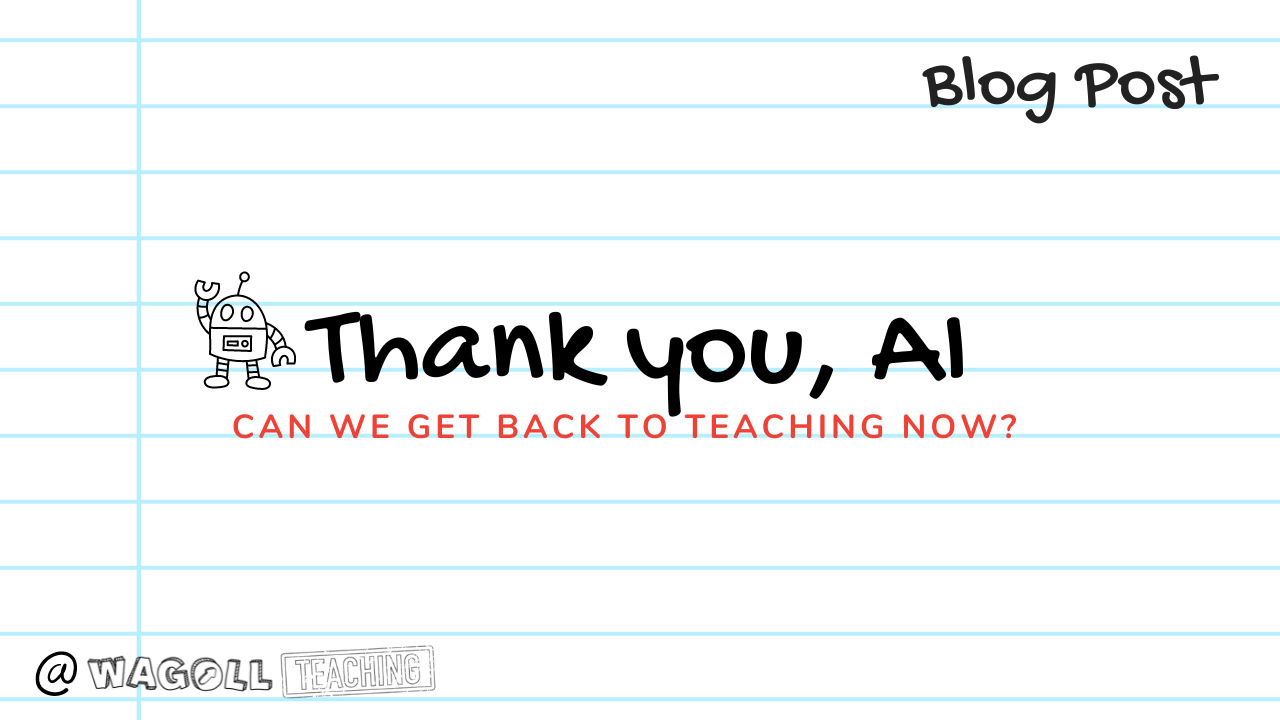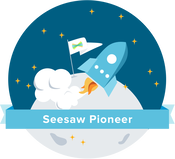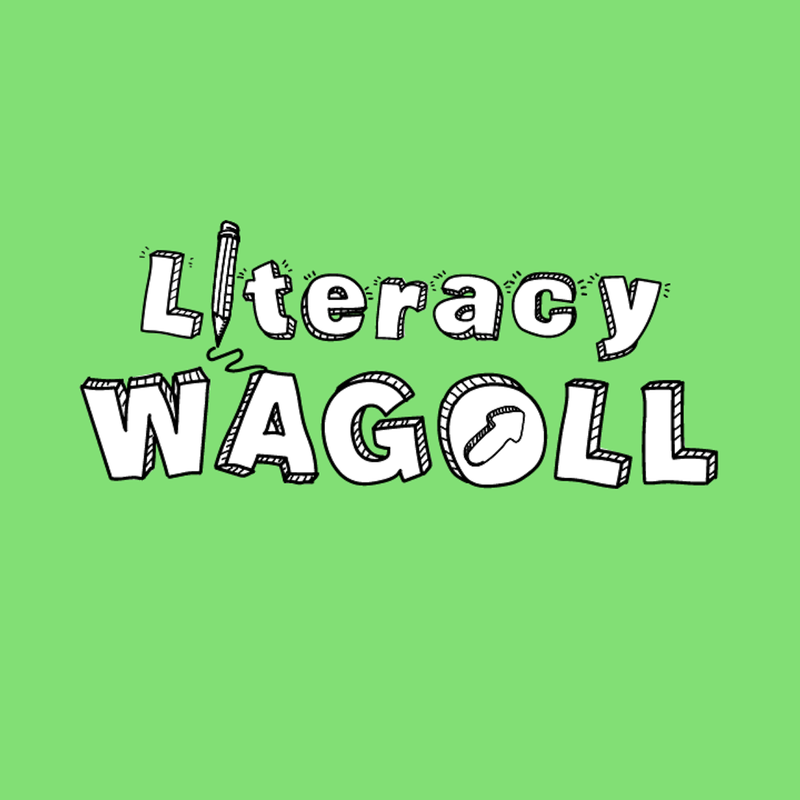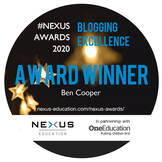|
Artificial Intelligence (AI) is already rapidly changing the education landscape. Not too long ago, ChatGPT was and still is, the talk of the town for both positive and negative reasons. The tool, from OpenAI, lets you type questions using natural language, to which the chatbot gives conversational answers. Educators were instantly playing around with the tool - asking the AI tool to write student reports, motivational emails to staff and plan lessons for their students. While there was much debate online, there is no getting away from the fact that AI is here to stay and is going to heavily influence the role of educators in the future. And for me, there are some very exciting opportunities ahead. Teaching is a humanistic profession, that is why I love it! But the work-load issue is taking teachers away from being just that. Teachers have become content creators - spending far too long on generating reports, writing feedback, creating presentations and resources. AI has the power to remove, or at least support much of this creation, allowing teachers to focus on curating and delivering content in a personlised and human-centered way. Here's how: What can't AI do?Before we look at what AI can do, it is important to consider what AI can't do to give ourselves a healthy reminder of the important humanistic role teachers play in the classroom.
Creativity, causal understanding and common sense are just some of the humanistic aspects teachers bring (and will always bring) to the classroom. So what can AI contribute and how is it going to allow us teachers to get on with being human? AI can personalise content meaning teachers can be personable. Personalised LearningI once really needed an example text that included various grammatical features so to model these to various members of my Year 6 class - so I wrote one.... Sometimes I would also know I needed a word bank to support some of my learners - so I would make them... In a not too distant future, AI will have already identified these gaps in knowledge and student needs and generated a personalsied example text or vocabulary sheet for each member of your class. AI algorithms can analyse each student's individual needs to create a customised experience for each. How a child engages with these is up to the teacher. AI can personalise content meaning teachers can be personable. Automated Grading and FeedbackChecking student progress against a long list of statements has become an unwanted regularity in Primary Schools. AI-powered assessment and feedback systems can quickly assess student assignments and provide detailed and accurate feedback. Century Tech is already an example of this becoming a reality with students able to access their assessment results and respond through AI generated activities. This is already freeing up teachers' time and allowing them to focus on the human aspect of assessment - the children themselves and what they now need to develop and grow further. Content RecommendationsIf you always do what you have always done, you will always get what you have always got. As a teacher, it is easy to fall into a routine - teaching in a similar way as you always have. Sometimes we haven't got the time to think of a new or better way. Learners and cohorts change and so should our teaching but it can be challenging to reinvent yourself repeatedly as a teacher. AI can analyse students’ performance and recommend specific content that will help them improve their understanding. This makes it easier for teachers to curate and select relevant and effective learning materials, instead of having to generate all of it themselves. Additionally, AI can recommend content that will help teachers develop themselves, while also engaging students in new and innovative ways. For example, AI-powered virtual reality can transport students to immersive learning environments where they can explore and experience new concepts in a hands-on way. This can lead to increased motivation and engagement, resulting in a more dynamic and humanistic learning experience. An AI-powered learning management system could automate routine tasks like scheduling to support learning theories like spaced and interleaved practice in schools. Automated Systems and Cognitive ScienceSpaced practice involves spreading out study sessions over a longer period of time, allowing time for the information to be absorbed and retained. Interleaved practice involves alternating between different topics, subjects or skills during a learning sessions to promote better transfer of learning and deeper understanding. An AI-powered learning management system could automate routine tasks like scheduling to support learning theories like spaced and interleaved practice in schools. A personalised study schedules for students could be created based on their progress and needs. This technology would track students' performance, monitor their progress and adjust the schedule accordingly, ensuring that the material is revisited at optimal intervals for maximum retention. Automated scheduling could also provide reminders to teachers, students and parents to practice, making it easier for them to stick to a consistent study routine. An AI driven and constantly adapting medium-term plan could be a way forward. Perhaps it is even an answer to how home learning is designed and assigned. AccessibilityProviding equal learning opportunities can be heavily supported by AI. It may provide alternative ways of accessing information and materials. For example, AI-powered tools can help students with visual or hearing impairments by converting text to speech or offering visual aids. It can also translate content to support students with English as an Additional Language while automatically provide icons and visuals to support with dual coding.
AI is already improving student outcomes by providing teachers with insights into their students' strengths and weaknesses. This allows teachers to tailor their instruction to meet the needs of each student, leading to better academic outcomes. However, the real exciting opportunity is the one it presents teachers and the relationship they have with their students. For me it will mean more time for those wellbeing conversations, the motivational moments and exciting opportunities for creativity. For me, it means we can finally get back to teaching again!
3 Comments
ADRIANA BALDERAS CARRILO
17/2/2023 08:08:37 pm
I really enjoy this post!
Reply
Kyle Washington
21/7/2023 10:37:08 pm
I really like how the pros and cons of AI are pointed out here. People do not often think there is a place for AI in the classroom, but it can be very helpful when used the right way.
Reply
Jody Fenhoff
17/7/2024 02:24:12 am
Thanks for the great information about AI. I have learned strategies for how AI can be used in the classroom as an educator and how my students can use it for their academic growth. I agree that there are many pros and cons to using AI but it is a part of our students' digital literacy.
Reply
Leave a Reply. |
SearchWith a keen interest in the neuroscience and psychology of learning, WAGOLL Teaching is about sharing research alongside great, simple teaching ideas to a global teaching community.
Ben has been in education for over 10 years and is passionate about simplifying high quality teaching and learning through innovative and practical approaches in the classroom. sUBSCRIBE |
|
Who are we? |
With a keen interest in the neuroscience and psychology of learning, WAGOLL Teaching is about sharing research alongside great, simple teaching ideas to a global teaching community.
|
All copyright reserved ©.
I would like to remind all visitors to this website that all pages on this site are copyright protected, unless stated. Most importantly, this site is for the use and enjoyment of all children, parents, guardians, carers and teachers who are involved in WAGOLL Teaching. Please use the resources/ideas as you need without replicating them for your own gains.
I would like to remind all visitors to this website that all pages on this site are copyright protected, unless stated. Most importantly, this site is for the use and enjoyment of all children, parents, guardians, carers and teachers who are involved in WAGOLL Teaching. Please use the resources/ideas as you need without replicating them for your own gains.









 RSS Feed
RSS Feed


